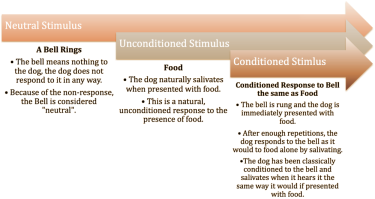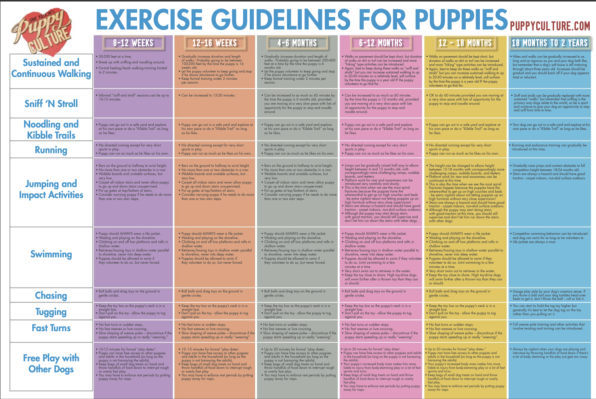Papillon puppy culture at Playtyme
Multiple locations, surfaces, textures, multiple litters playing together, puppies playing with adult dogs, puppies playing with multiple people old and young.
more on puppy culture can be found by Googling it.
After Puppy leaves us it is very important that you continue to expose your new puppy to 30 different things/places/events/enviorments/people/other dogs in first month of being in new home. We have done everything we can to springboad your puppy into this concept. Papilllon puppies who stay at home, never see anything but home, tend to become scared/stressed in new places/people/events/travel.
So continuing to expose your new puppy to lots of "new" things over the next year or two will greatly help to keep your puppy happy and friendly in all situations. the Key word in this is "NEW".
Exposure to what is "normal" is not going to keep your puppy moving towrds being happpy in all places and with all people. Puppies need to experince NEW things daily so that they can learn about life.
What Puppy Culture is
Puppy Culture is a program developed by Jane Killion, a
professional dog trainer, and breeder. It is a comprehensive, organized program for breeders to follow during the first weeks of a puppy’s life.
Puppy culture is a comprehensive program for breeding and raising puppies that aim to optimize their physical and mental development. It is based on the latest scientific research and focuses on providing puppies with a wide range of early learning experiences and socialization opportunities.
Puppy culture aims to provide puppies with a foundation of experiences and skills that will help them grow into confident, well-adjusted adult dogs. This includes providing puppies with exposure to a variety of people, places, and experiences, as well as teaching them basic manners and obedience skills.
Puppy culture programs may include activities such as exposing puppies to different surfaces, sounds, and sights; providing them with opportunities to play and explore; and teaching them basic
commands such as "sit" and "stay." Puppy culture programs may also include training in canine behavior and development, as well as guidance on how to properly socialize and care for puppies.
Puppy culture is often associated with breeding programs that are focused on producing high-quality, well-adjusted puppies. It is considered a holistic approach to breeding and raising puppies that aim to optimize their overall health and well-being.
The first 12 weeks of a puppy’s life are incredibly
important. This is an almost magical time when a breeder has the power to change the outcome of a puppy’s life by what we choose to teach him. By doing just the right things at just the right time,
we can give your puppy the best start possible.
At PlayTme, we use a combination of protocols commonly used in the Puppy Culture program - specifically in our home-based program.
PRENATAL PERIOD:
Making sure that your puppy’s genetic material is excellent is only the beginning. The physical and emotional health of the mother will affect the health of her puppies. Since research has shown that puppies born to mothers that receive prenatal massage are more docile and enjoy being touched, we spoil our mothers with lots of affection and belly massages. A puppy’s predisposition to form deep and meaningful relationships begins even before they are born.
NEONATAL PERIOD: 0-14 DAYS
Early Neurological Stimulation (ENS) begins on day 3 and continues through day 16. Research shows that tiny struggles and stresses in appropriately small doses are actually good for puppies and will help them grow into strong, healthy well-adjusted adults. Benefits include greater tolerance to stress, greater resistance to disease, a faster adrenal system, a stronger heart rate, and a stronger heartbeat. This is a gift that a breeder can only give their puppies once during the window of 3-16 days.
TRANSITIONAL PERIOD: 14-21 DAYS
Behavioral markers are used to identify the beginning and end of each developmental period because every puppy is different and these timelines are simply guidelines. The transitional period begins when the puppy’s eyes open and ends when they first startle upon hearing sounds.
CRITICAL SOCIALIZATION PERIOD: 3-12 WEEKS
Most people think of socialization as exposing their puppies to as many new experiences as possible while the puppy is young. While this is part of the process, it’s not enough. Our goal is to raise dogs that have the emotional intelligence to connect with you. Emotional intelligence can be taught to young puppies and one of the goals of the Puppy Culture Program is to teach breeders how to do this. There are 7 key things that will nurture the emotional intelligence of a puppy.
-
1: Communication – giving a puppy his own voice (Communication Trinity – (power up the clicker, box game, manding), attention/distraction protocols)
-
2: Emotional stability – the ability to recover easily from fear as well as stress (startle recovery, barrier challenges, Volhard Aptitude Test at day 49)
-
3: Habituation – familiarity with the maximum number of things (Puppy Parties, sound protocols, habituation soundtracks, and noises, meeting different people, dogs, and other animals)
-
4: Enrichment – the view that novelty and challenges are opportunities for enrichment rather than things to be feared or avoided (novelty items, Adventure Box, off-premises socialization)
-
5: Health – physical wellness and motor skills that will allow the puppy to develop in a neurologically and physically sound way (daily weight checks, grooming, vaccinations, deworming, proper nutrition, vet health checks)
-
6: Skills – learned behaviors that allow him to function in human society (recall, manding, simple commands, litterbox training, crate training, leash walking, resource guarding, bite inhibition)
-
7: Love – the desire to seek out the company of both dogs and humans as emotionally positive experiences (shaping emotional responses, Happy and Calm CER (Conditioned Emotional Responses), daily cuddles with humans and mom).
Weeks 12-20: Puppies go home with their families. This
starts the socialization period to adjust to their new family’s lifestyle and be introduced to new people and experiences.
WHAT IS MANDING?
“Manding” is an automatic sitting in front of a person the puppy is interacting with. It is not a required behavior or a rule, but rather an acceptable behavior taught to replace jumping on a person. It is not the same as a “sit” command. Think of manding as sitting when the puppy would be otherwise jumping up.
A puppy is naturally predisposed, programmed if you will jump
on a dog or person they are soliciting interaction from. Excitable jumping is charming in a teeny puppy but gets old fast in an adult dog. As the author of Puppy Culture Jane Killion puts it, manding is a voice given to a puppy. Now, he can tell you he wants to interact and do it in a welcome way, without
jumping on you or an x-pen as you’re approaching, for the rest of his life. He is no longer in danger of being pushed off or shut down while either asking for attention or responding
to your call for it.
CLASSICAL CONDITIONING AT PlayTyme
Dogs are constantly processing information, consciously and subconsciously. Most of the training we do with our dogs is done through operant conditioning - prompting behaviors, and reinforcing or punishing the performed behavior. The dog learns that each particular behavior has a consequence, and that consequence will dictate its behavior in the future. This is training through the dog's consciousness- the dog learns that its choices have consequences, Good or Bad decisions dictate whether it is worth repeating.
While we're doing this, we are also subjecting ourselves and our dogs to the laws that govern classical conditioning - relating a neutral stimulus to an unconditioned stimulus enough times creates a subconscious conditioned response from the dog to the previously neutral stimulus. The responses a dog has to a classically conditioned stimulus are NOT a choice on the dog's part.
Below are some examples of the most commonly referred to experiments in classical conditioning, Pavlov's Dogs:
EMOTIONAL RESPONSE
An emotional response to a stimulus is the way the dog feels when presented with it.
Some general examples:
-
Food = happy
-
Owner leaves = sad
-
Vet's office = scared
While there's no way to sit a dog down on a psychologist's couch and ask them how a certain event made them "feel", we can view external behaviors the dog exhibits when presented with a given stimulus and evaluate, based on the science of canine body language, whether the dog is anticipating something good or something bad happening from that experience.
THE ANTICIPATION OF SOMETHING GOOD CAN BE TRANSLATED TO THE HUMAN EMOTIONS OF HAPPY AND EXCITED.
THE ANTICIPATION OF SOMETHING BAD HAPPENING CAN BE TRANSLATED TO THE HUMAN EMOTIONS OF FEAR AND SADNESS.
Current empirical evidence related to Canine PTSD (Post-Traumatic Stress Disorder) further indicates that dogs can and do have long-lasting emotional responses to previously neutral stimuli.
CONDITIONED EMOTIONAL RESPONSE (CER)
"Conditioned" - the dog has been classically conditioned. "Emotional response" - the internal or external reaction when presented with a given stimulus or environment.
A Conditioned Emotional Response is the feeling a dog has about a specific stimulus or environment.
CERs are formed either through the owner's conscious attempt to generate or manipulate them, or completely independent of conscious effort. CERs are happening during every training session, purposefully or not.
Examples of unanticipated CERs:
-
A dog is taken to the park. Every time the dog goes to the park, it gets to play fetch. The dog loves to fetch, and every time it goes to the park, it gets excited in anticipation of playing fetch- it starts whining in the car to get out, its teeth chatter, and it may even shake with excitement. After a few months, the owner chooses to train obedience in the same park. Instead of performing its behaviors correctly, the dog is shaking, chattering, and bouncing with excitement. It is anticipating playing fetch. Because of this, it has difficulty maintaining its stays, forges in its healing, and barks through position changes. The dog brought its conditioned extreme level of excitement about the park into its obedience behaviors. The owner must understand that the dog's poor performance is due to its Conditioned Emotional Response to the environment, not due to disobedience of commands.
-
A dog gets in the car. It's the destination? The vet's office (which in this example we presume the dog finds to find scary). Sometime later, the dog gets in the car. Is it the destination? The vet's office. And the next time? You guessed it- the vet's office. The dog is only put in the car when it is traveling to the vet. What begins to happen? The dog begins to anticipate the emotional response it feels at the vet (fear) when it gets in the car. This causes the dog to refuse to get in the car, and/or pant/whine/bark/panic/carsick during the drive. The dog is now classically conditioned to feel the same way about the car that it felt about the vet's office.
-
A dog is trapped in a burning building and is rescued by firefighters. A few weeks later, its owners notice that every time a fire engine blazes by, the dog begins pacing, circling, and panting. As time goes on, the frantic behavior remains. The dog associated the fire engine's siren with the fear it felt during the fire. The dog was classically conditioned to feel the same way about the siren that it did during the fire.
MANIPULATING THE CONDITIONED EMOTIONAL RESPONSE
CERs can also be intentionally manipulated for the benefit of the dog.
In cases of behavior modification, the handler can classically condition the dog to perceive a certain stimulus differently than it had before. Referring back to Example 3, the dog could become unconditioned to fear the sirens by reconditioning the dog to associate the noise with something more pleasant, like food.
The longer neutral stimulus x is associated with unconditioned stimulus y, the stronger the dog's conditioning to stimulus x will be. To use the example, the longer sirens are associated with food, the stronger the dog will be conditioned to hear sirens and feel the same way about them as they feel about food (sirens = food).
The inverse of this is true as well. The longer neutral stimulus x is DISASSOCIATED with unconditioned stimulus y, the weaker the conditioning to stimulus x will be. In the same example, the longer the dog hears sirens without something frightening happening to it, the weaker the conditioning will be to hear sirens and feel the same way about them as they feel about almost dying (sirens ≠ death).
We have to remember that fearful and painful events are remembered longer and are more salient to the dog than anything positive or rewarding. Why? Survival. If you stepped into the road and were bumped by a car, for a very long time, you would be cautious about stepping into the road again, and for good reason. You have been conditioned to be slightly afraid- in human psychology, cautious- of roads, and you will now look both ways before crossing the street.
It only takes one instance for a previously neutral stimulus to be viewed with fear for a very long time. In the above examples, of a lifetime of hearing sirens without consequence had no bearing on the one incident that sparked the fearful conditioning to the noise.
On the other hand, when we think about our positive reinforcement markers ('yes', 'good', *click*, etc.), we have to "load" those to get to a point where the dog is conditioned to them. When we "load" a positive reinforcement marker, we pair the marker with food hundreds of times. *Click* - Treat, *Click* - Treat, *Click* - Treat, etc., etc., etc. until the dog begins to salivate at the sound of the click the same as it would to the presence of a treat.
Compare the number of repetitions necessary for a stimulus to become fearfully classically conditioned (1) to the number of repetitions necessary for a stimulus to become positively classically conditioned (100s).
IT TAKES LONGER FOR A DOG TO DISASSOCIATE FROM A FEARFUL STIMULUS THAN FROM A POSITIVE ONE.
POTTY TRAINING FOR Papillons
In Puppy Culture, we use litter boxes to start teaching the puppies to leave the “nest” to eliminate starting as young as 3 weeks old. This works right along with their natural instincts to keep the nest clean.
As the puppies grow, the litter box area gets smaller and moves farther away from the “den”. The idea is that they learn there are many places they may not use as a bathroom and one place where it’s ok. Then, they are taken outside on a routine to learn that they are to use the outdoors to go. Most litter materials have a natural smell to them so they have no problem transitioning to the outdoors.
















































































